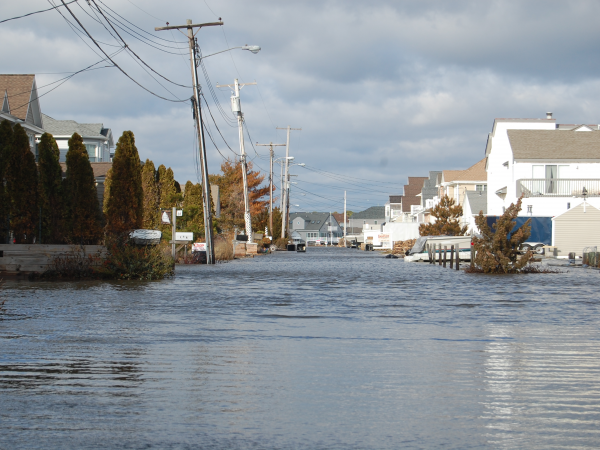Brick officials are planning to follow the lead of another coastal municipality that has gone to war with rising tides and frequent floods.
ACT Engineers, which was responsible for creating a wide-ranging plan to combatting flooding in Ocean City, will bring its expertise to Brick, officials said Tuesday night. Meanwhile, for the third township council meeting in a row, residents of the Normandy Beach neighborhoods gathered to voice concerns and put out a plea for action. The latest flood came on New Year’s Eve, when one resident said neighbors could not walk to each other’s homes due to the depth of the water.
“This is by far the worst flooding we’ve ever seen in Normandy Beach,” said Stephen Timoni, of Broad Avenue. “It’s dangerous, hazardous, it’s unhealthy and it just can’t continue like this.”
|
|
Timoni’s thoughts were echoed by about a dozen of his neighbors who all stood at the meeting to identify themselves. At recent meetings, residents of other bayside communities, especially Shore Acres, also called on the township to do more to combat flooding. Brick officials have already decided to move forward with a project to install flapper valves on storm drains that will allow storm water to exit but prevent bay water from backing up through the drain onto the street – the main cause of roadway flooding in waterfront neighborhoods.
The hiring of ACT comes a few months after the firm made wide-ranging recommendations in Ocean City. According to OCNJ Daily, ACT “combined some old strategies, some new tricks and some serious money” to produce solutions. Among them were a series of dredging projects in shallow lagoons, the removal of silt from a series of inlets to harbor areas and the installation of pumping stations to actively propel water off roadways and into the bay. Other recommendations included physically raising roadways and installing new drainage pipes.
At Tuesday night’s meeting, several residents said they hope Brick will consider pump systems. The state installed numerous pumps when the Department of Transportation rebuilt Route 35 following Superstorm Sandy, however none were located in Brick.
The Ocean City plans also called for physical barriers to be built that would redirect water around some residential neighborhoods. The Normandy Beach residents suggested such infrastructure could be installed near Bayside Park, opposite Brick Beach III, to prevent water from rushing into the lagoons just south of the property.
Ocean City has committed to a multi-million dollar plan to implement flood controls over several years. Brick, under the administration of Mayor John Ducey, spends $8.5 million per year on capital improvement projects, but that fund covers the entire town and includes various projects on township property as well as street paving and drainage improvements in various areas. Bergin said the township could find success appealing to FEMA for funding, though that requires a gargantuan amount of data that must be obtained through studies.
“The key to getting any money from FEMA is to have a high rating on your cost-benefit analysis,” explained Bergin.
Essentially, if a project can save FEMA from paying out flood insurance claims in the future, there is a good chance they will fund it. Ironically, if the township goes ahead with its own plans to curb flooding, claims would be reduced on their own and the cost-benefit analysis would not show significant savings to the federal agency.
“By funding several millions dollars on this long-term project, are we going to have fewer claims?” asked Bergin rhetorically. “We have to pitch it in a way that doesn’t focus only on the cost analysis, but if you’re FEMA, you’re just looking to save money.”
Regardless, Bergin said, the township is committed to mitigating flood issues on both the island and mainland portions of the township, starting with the development of an engineering plan.
“Retaining [the engineer] is not going to be cheap, but we long as we see a benefit and a strategy that will be successful, we will keep developing it and provide relief to the neighborhoods that have been suffering.”

Advertisement

Police, Fire & Courts
Teacher From Brick, 36, Charged With Carrying on Affair With Student
Brick Life
Adult Autism Transition

Police, Fire & Courts
Teacher From Brick Charged in Another Sex Affair With Student









